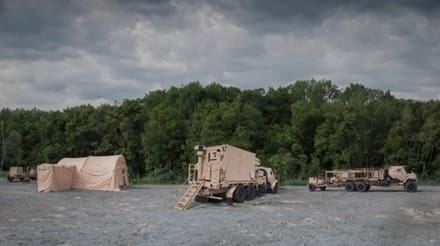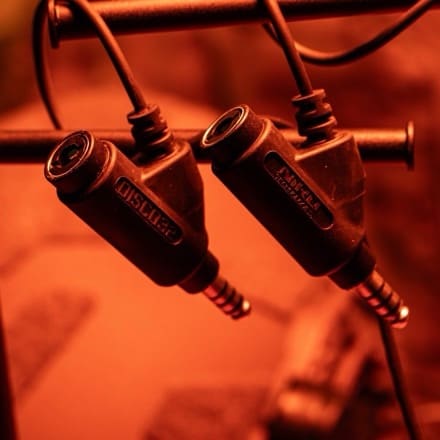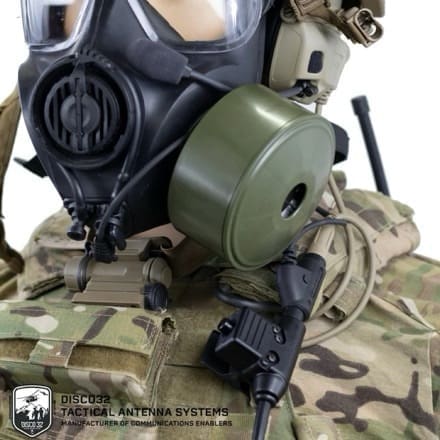Providing Advanced & Secure MANET Radio Capabilities to UAS Developers for use in DoD Applications
· StreamCaster SC4200EP and StreamCaster LITE SL4200 designated by DIU as NDAA compliant and approved for use in conjunction with Blue UAS platforms
· StreamCaster LITE SL4200 is the first MANET radio included in the Green UAS Cleared Components List
· StreamCaster LITE SL4200 added to the Blue UAS Framework as part of AUVSI Green UAS Certification data sharing agreement with DIU
Los Angeles, California (July 18, 2024) – Silvus Technologies, Inc. (“Silvus”), a global leader in advanced wireless networking communication systems, today announced that the U.S. Department of Defense (DoD), Defense Innovation Unit (DIU) has officially added Silvus’ StreamCaster SC4200EP and StreamCaster LITE SL4200 MANET radios to the Blue UAS Framework. After undergoing the Blue UAS program’s rigorous evaluation, this certification validates their compliance with DoD standards for cybersecurity, supply chain integrity and operational reliability. Inclusion on the Blue UAS Framework further demonstrates the SC4200EP and SL4200 interoperability and NDAA compliancy, designating them as approved for use in conjunction with Blue UAS platforms. This achievement exemplifies Silvus’ commitment to delivering cutting-edge, secure, and reliable C2 and mesh networked communications solutions for unmanned systems.
Additionally, the StreamCaster LITE SL4200 achieved a groundbreaking milestone by becoming the first Mobile Ad Hoc Network (MANET) radio to be included in the Association for Uncrewed Vehicle Systems International (AUVSI) Green UAS Cleared Components list. This inclusion not only highlights the advanced performance capabilities of the SL4200 but also reinforces its status as a trusted and secure component for unmanned systems operations.
The addition of the SL4200 to the Blue UAS Framework was facilitated through the AUVSI Green UAS Certification data sharing MOU agreement with DIU. Through partnering with AUVSI, Silvus supports the Green UAS program’s goal of advancing the integration of UAS into defense applications and building a strong and secure drone industrial base.
“The first successful integration of Green UAS certified components onto the Blue UAS Framework through our MOU with DIU is a significant milestone that underscores our commitment to bolstering the commercial drone industry’s alignment with secure drone standards, enhancing both security and innovation,” said Casie Ocaña, Director, Trusted Programs at AUVSI.
StreamCaster SC4200EP is a 2×2 MIMO software-defined radio, delivering best-in-class MANET performance and connectivity at the tactical edge. With up to 10 Watts of output power (20 Watts effective performance, thanks to TX Eigen Beamforming), up to 100 Mbps data throughput and single/dual band frequency options, the SC4200EP delivers high-fidelity video, voice and IP data communications with class-leading range and performance. With multiple form-factor options including handheld, Drop-In Module and OEM module, combined with a low SWaP profile, the SC4200EP is ideal for portable or embedded unmanned applications.
StreamCaster LITE SL4200 is a 2×2 MIMO software-defined radio that provides up to 1 Watt of output power (2 Watts effective performance, thanks to TX Eigen Beamforming), up to 20 Mbps data throughput across a variety of single band frequency options. Available in a ruggedized handheld or OEM module form-factors, its ultra-low profile and flexible interface options make it ideal for integration into unmanned platforms where size, weight and power are key.
At the heart of every StreamCaster MANET radio is Silvus’ proprietary MN-MIMO waveform, that creates a self-forming and adaptive mesh network – capable of linking hundreds of nodes with unmatched range, throughput, EW resiliency and scalability.
“We are thrilled to have our StreamCaster SC4200EP and StreamCaster LITE SL4200 MANET radios join the Blue UAS Framework, and for the SL4200 to be the first MANET radio added to the Green UAS Cleared Components List,” said Jimi Henderson, Vice President of Sales, Silvus Technologies. “Silvus continues to push the boundaries of mesh networking technology for mission critical applications. This achievement is a testament to our dedication in working across the industry to advance the capabilities of unmanned systems through robust, secure, and powerfully connected tactical communications solutions.”
The Defense Innovation Unit (DIU) Blue UAS Framework program provides advanced capabilities to UAS developers and reduces risk for government customers, ensuring that only secure and trusted technologies are used in critical defense operations. For more information visit: www.diu.mil/blue-uas.
AUVSI’s Green UAS certification assesses and verifies that commercial drones and components meet the highest levels of cybersecurity and NDAA supply chain requirements through a security controls assessment and vulnerability and penetration testing. Through a Memorandum of Understanding (MOU) with the Defense Innovation Unit (DIU), the Association for Uncrewed Vehicle Systems International (AUVSI) Green UAS certification data is shared directly with DIU, facilitating the inclusion of certified drone component to be added to the Blue UAS Framework. For more information visit: www.auvsi.org/green-uas.
Learn more about the StreamCaster family of MANET radios on our website and follow us on LinkedIn.
























































































































